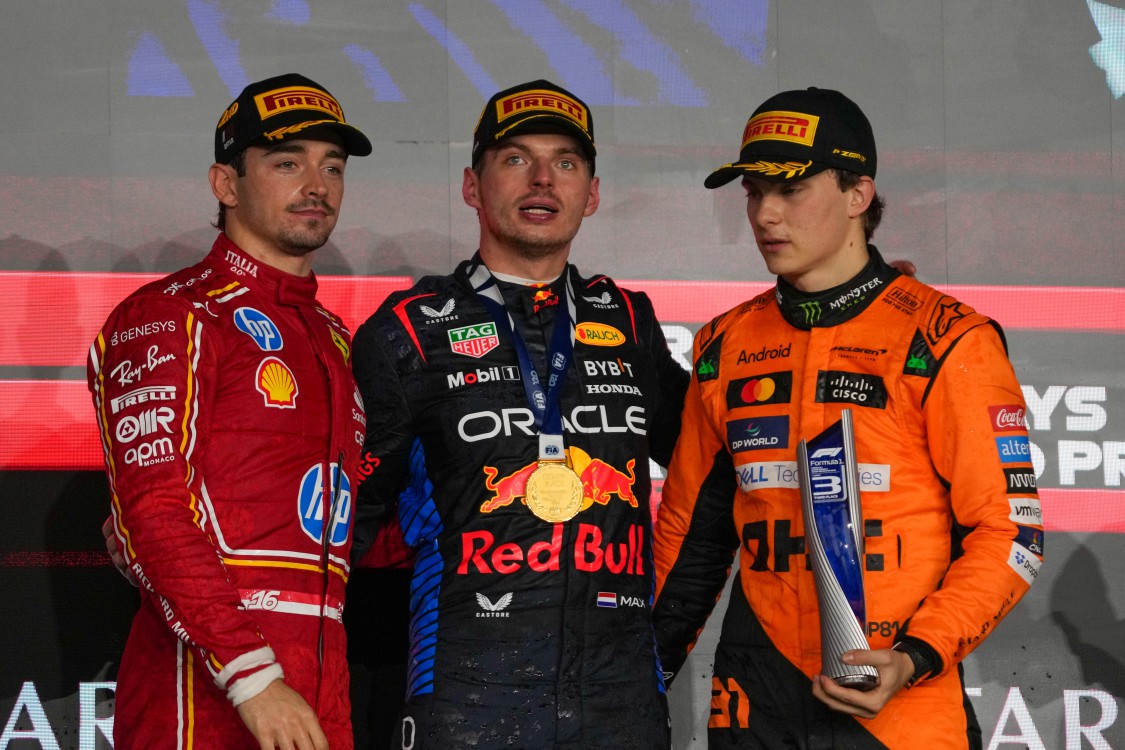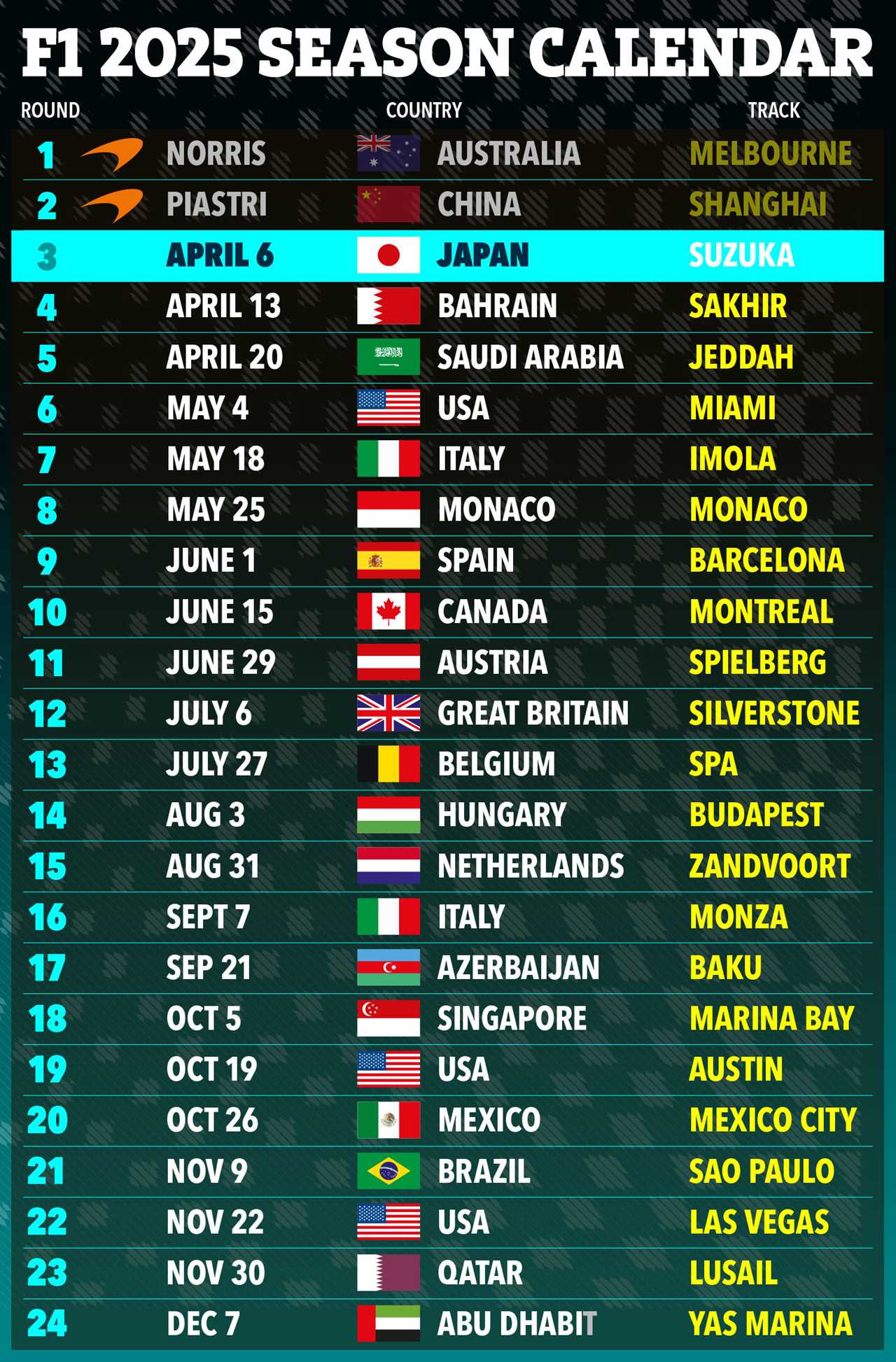
Celebrating 75 Years with Fresh Regulations
As Formula One gears up to mark its 75th anniversary, the FIA has unveiled a series of seven significant rule changes aimed at enhancing the competition and sustainability of the sport. These adjustments come at a pivotal moment, especially with renowned driver Lewis Hamilton transitioning to Ferrari in pursuit of his eighth world title.
Farewell to the Fastest Lap Point
The most notable change for the 2025 season is the removal of the bonus point awarded for the fastest lap. Introduced in 2019, this rule allowed drivers to earn an additional point if they recorded the quickest lap while finishing within the top ten. However, it often became a strategic maneuver, as seen when Daniel Ricciardo secured the point in his final race to prevent Lando Norris from achieving a Grand Slam weekend. Eliminating this point aims to streamline race strategies and focus on overall performance.
Enhanced Driver Cooling Systems for Extreme Climates
With the global F1 calendar taking drivers to some of the hottest venues, such as Saudi Arabia, the FIA has introduced regulations to improve driver safety and comfort. A new "Heat Hazard" declaration will be made if temperatures are forecasted to exceed 31°C. In such cases, cars will be permitted additional weight: 2kg more during Practice, Qualifying, and Sprint Qualifying sessions, and 5kg for Sprint or Grand Prix races. This adjustment ensures that cars remain efficient and safe in soaring temperatures.
Restricting the Use of Previous Season Cars
To maintain fairness and promote innovation, the FIA has tightened the Testing of Previous Car (TPC) regulations. Teams are now limited to 20 days of TPC testing, with race drivers restricted to participating in only four days and covering no more than 1,000km. McLaren has already demonstrated the benefits of these changes, allowing drivers like Lando Norris and Oscar Piastri to gain valuable experience with last season's cars ahead of the new tests. This move also supports younger drivers in acclimating to F1 regulations.

More Track Time for Rookie Drivers
Recognising the importance of nurturing new talent, the 2025 rules mandate increased running time for rookies. Since 2022, teams have been required to field a rookie in each car twice per season, typically during the first practice session. The new regulations double this requirement, ensuring that rookies participate in at least two sessions per car each season. This change provides emerging drivers with more opportunities to develop their skills on the track.
Tightened DRS and Wing Deflection Regulations
The Drag Reduction System (DRS), which allows drivers to adjust their rear wings for reduced downforce and higher speeds, will see stricter design limitations. Previously, teams experimented with "mini-DRS" concepts that tilted the rear wing backward at high speeds. Starting in 2025, DRS deployment will be confined to only two positions: fully open or fully closed. Additionally, wing deflections will be more tightly controlled to ensure consistency and safety across all teams.
Revised Qualifying Procedures
The qualifying process has undergone significant changes, influenced by issues faced during the 2024 Sao Paulo Grand Prix, where wet conditions disrupted the session. If a qualifying session is deemed unsafe, the race order will default to the Drivers’ Championship standings. Furthermore, if only the first part of qualifying (Q1) is completed and subsequent sessions (Q2 and Q3) are interrupted, drivers will be ranked based on their performance in the previous session. For instance, if a red flag halts Q3, drivers like Lando Norris and Lewis Hamilton will be ordered according to their Q2 times.
Introduction of a Mule Car Tyre Test
End-of-season testing in Abu Dhabi will see the introduction of a mule car tyre test. While one car can be driven normally by a driver who has competed in up to two Grands Prix, the second car will be dedicated to testing the new tyres slated for 2026. These tyres will feature different dimensions and specifications, and teams will use this session to gather essential data ahead of the next season.

2025 Race Calendar: What to Expect
The 2025 F1 season features a robust schedule with 24 rounds spanning the globe. Highlights include the season opener in Australia, a sprint weekend in China, and prestigious races in Monaco, Silverstone, and Abu Dhabi. Notably, the calendar incorporates several sprint weekends, offering fans more high-octane action and drivers more racing opportunities. Each race weekend follows a structured timetable, ensuring maximum excitement and competitiveness throughout the season.
Looking Ahead: Impact on Drivers and Teams
The new regulations are set to bring both challenges and opportunities for teams and drivers. Established drivers like Lewis Hamilton will need to adapt to the changes while leveraging their experience to navigate the evolving landscape. Meanwhile, rookies such as Kimi Antonelli stand to benefit from increased track time, allowing them to showcase their talents and potentially secure their place among F1’s elite.
As Formula One approaches its milestone 75th year, these rule changes demonstrate the sport’s commitment to innovation, safety, and competitive integrity. Fans can look forward to a thrilling 2025 season as teams strategise under the new regulations, promising an exhilarating chapter in the world’s premier motorsport.
Frequently Asked Questions
What is DRS and how does it function?
The Drag Reduction System (DRS) in Formula 1 is a device that helps facilitate overtaking. When activated, it reduces aerodynamic drag and gives the trailing car a temporary speed boost. The DRS system can only be activated in predetermined areas on the track or when a car is within one second from the vehicle ahead.
What effect does the weather have on Formula 1 races and how do they affect each other?
Weather conditions have a major impact on Formula 1 races. They can influence tire choice, car set-up, and strategy. Rain can make the track slippery, forcing drivers onto wet or intermediary tires. The teams must be ready to react quickly to changing circumstances, while drivers should show skill and caution. Temperature changes can impact engine performance and tire life, which in turn can change the course of an event.
How do Formula 1 teams move equipment between races and how can you help?
Formula 1 teams plan meticulously the logistics for transporting their cars, equipment, and parts globally. For European races, trucks are often used, while air cargo is preferred for long-distance and overseas events. Each team has their own dedicated logistics division that makes sure everything gets there on time, in good condition and manages a schedule that spans continents.
How are Formula 1 vehicles designed to ensure driver security?
Formula 1 cars come with advanced safety features designed to protect the driver. The features include a carbon-fiber monocoque with a high strength, the Halo cockpit safety system, energy-absorbing structures and advanced helmet technologies. Each component is thoroughly tested and adheres strictly to the safety standards set forth by the FIA. This ensures that drivers are protected against different types of impacts.
What is the job of a Formula 1 race engine?
A Formula 1 race engineers is key in managing car performance and driver performance during the race weekend. The Formula 1 race engineer communicates constantly with the driver and provides critical information. They also work with the pit crew to make quick decisions. The race engineers make critical decisions regarding tire changes and car adjustments. They also decide on race tactics.
Statistics
- The Monaco Grand Prix is the shortest race on the Formula 1 calendar, with a total race distance of only 260.286 kilometers.
- Lewis Hamilton has the most career wins of any driver in Formula 1, amassing over 100 victories.
- The largest winning margin in a Formula 1 race was recorded by Jim Clark in 1963 at the Belgian Grand Prix, with a lead of nearly 5 minutes over the second-place finisher.
- Kimi Räikkönen holds the record for the fastest lap in Formula 1 history, set at the Italian Grand Prix in 2018 with an average speed of 263.587 km/h (163.785 mph).
- As of the end of the 2022 season, Formula 1 races have been held in 34 different countries around the world.
- Jenson Button accomplished the greatest number of overtakes in a single race, with a total of 26 during the 2011 Canadian Grand Prix.
- The highest number of cars to start a Formula 1 race was 34 at the 1953 German Grand Prix.
- The fastest lap ever recorded in Formula 1 was set by Juan Pablo Montoya, reaching a top speed of 372.6 km/h (231.523 mph).
External Links
How To
How to Choose the Right Formula 1 merchandise
When selecting Formula 1 merchandise, you need to consider certain factors. You should choose official merchandise if you want to support your favourite teams and drivers. When choosing memorabilia, such as model cars or signed items, verify authenticity and opt for reputable dealers. You should also consider the historical value, as merchandise associated with notable races or legendary racers often has a greater sentimental/monetary value. Don't forget to consider the usefulness and value of the item to make the most from your purchase.
Did you miss our previous article...
https://sportingexcitement.com/formula-1/tai-woffinden-injured-in-highspeed-poland-crash-hospitalized
 CricketBoxingFormula 1GolfHorse RacingPremier LeagueTennisPrivacy PolicyTerms And Conditions
CricketBoxingFormula 1GolfHorse RacingPremier LeagueTennisPrivacy PolicyTerms And Conditions
